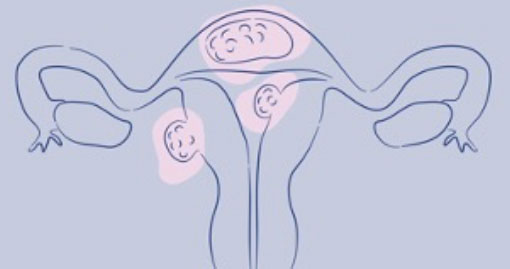What Is the Acessa Procedure?
The medical term for the Acessa procedure is Laparoscopic Radiofrequency Ablation (Lap RFA). That’s a real mouthful. Essentially, what the doctor does is deliver heat directly into a fibroid in order to treat the tissue and in turn, relieve your symptoms.
Could It Be Right for You?
While the Acessa procedure is right for some, only you and your physician can decide the best treatment option for you. Check out some of the benefits and risks associated with the Acessa procedure.


Tackle the Fibroid, Protect the Uterus
The Acessa procedure allows for a thorough and minimally invasive method of treating your fibroids. It was designed to preserve healthy uterine tissue by focusing treatment only on the fibroid (versus cutting into the uterus or removing it completely) while relieving symptoms caused by fibroids.1-4


Insurance Support
Insurance is complicated, but don’t worry, we’re here to help.
Will your insurance cover the Acessa procedure?
Prior Authorization
Most insurance companies require that you or your doctor requests “prior authorization” before they cover the Acessa procedure.
In the request, the doctor describes the nature of the patient’s condition and why it is necessary to perform the Acessa procedure. The insurance company reviews the request and makes a determination regarding insurance coverage under the patient’s insurance plan. This determination is either an “approval” of the prior authorization or a “denial,” which means the insurance company explicitly is not committing to paying for the procedure being requested.
Good news: if you get a denial, there is typically an option to appeal it. And you don’t have to do it alone.
Insurance Appeals
If you are facing an appeal with your insurance denials while struggling with fibroid symptoms, the experience can be overwhelming. Hologic offers resources to physician offices and has successfully helped dozens of providers overturn denials Although we cannot guarantee approvals or coverage, physician offices are here to support you in the process.
If you are a patient who is concerned about your insurance covering the Acessa procedure, have experienced an insurance denial or have been denied access to the Acessa procedure through your commercial or Medicaid plan, you can reach out to our Insurance Support and Reimbursement Manager at Behnaz.Asgar@hologic.com.
Let’s Keep in Touch
Important Safety Information
The Acessa ProVu system is intended to identify and shrink symptomatic uterine fibroids. The Acessa ProVu system is used by trained physicians during laparoscopic surgery under general anesthesia. Rare but serious risks of this procedure include, but are not limited to, infection, internal injury, blood loss and complications related to laparoscopic surgery and/or general anesthesia. This procedure is not recommended for women who are planning future pregnancy. This information is not medical advice. Please discuss the risks and benefits with your doctor to find out if the Acessa procedure may be right for you.
- Chudnoff SG, Berman JM, Levine DJ, Harris M, Guido RS, Banks E. Outpatient procedure for the treatment and relief of symptomatic uterine myomas. Obstet Gynecol. 2013;121(5):1075-1082.
- Lee BB, Yu SP. Radiofrequency ablation of uterine fibroids: a review. Curr Obstet Gynecol Rep. 2016;5(4):318-324.
- Lin L, Ma H, Wang J, et al. Quality of life, adverse events, and reintervention outcomes after radiofrequency ablation for symptomatic uterine fibroids: a meta-analysis. J Minim Invasive Gynecol. 2019;26(3):409-416.
- Berman JM, Guido RS, Leal JGG, et al. Three-years outcome from the Halt trial: a prospective analysis of radiofrequency volumetric thermal ablation of myomas. J Minim Invasive Gynecol. 2014;21(5):767-774.
